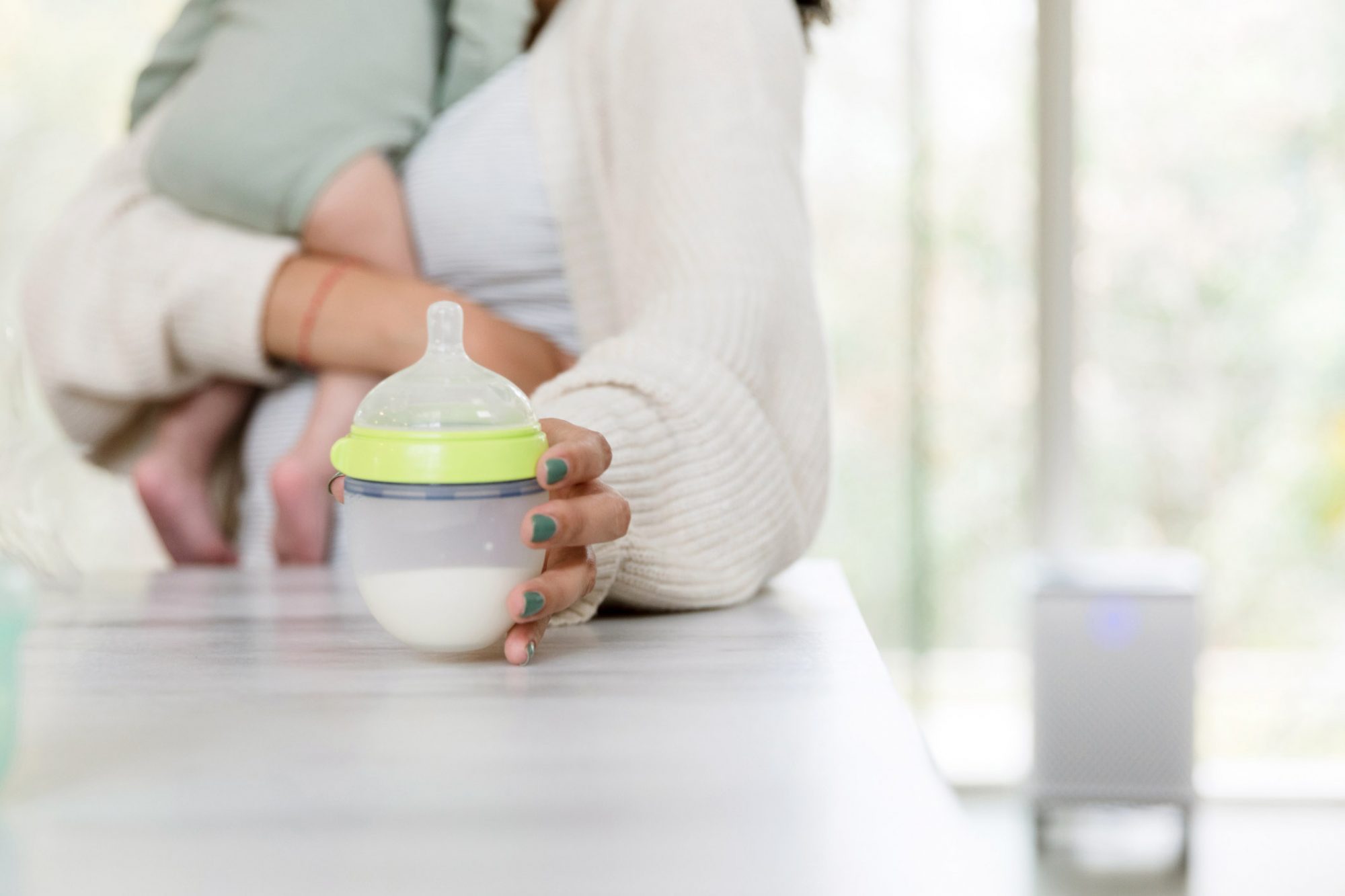
In general, babies who are breastfed have a higher chance of having jaundice than babies who are fed formula. Your baby might have jaundice if you notice yellowing of their skin. This happens because there's too much of a substance called bilirubin in the blood which is a byproduct of red blood cells breaking down. Normally, the liver excretes this excess bilirubin in the urine or stool but in a newborn, the liver is immature.
Over half of all babies have jaundice in their first few weeks, but about 20 to 30 percent of breastfed babies get a type of jaundice directly related to breastfeeding. Here's what to know about this specific type of jaundice.
What Is Breast Milk Jaundice?
In general, babies who are breastfed have a higher chance of having jaundice than babies who are fed formula. Before talking about what breast milk jaundice is, it's important to explain what it's not. Breastfeeding jaundice and breast milk jaundice sounds very similar and are easy to mix up.
Breastfeeding jaundice, or suboptimal intake jaundice, happens when a baby who is breastfed isn't getting enough milk and is struggling with nursing. This usually happens in the first week and can be treated by increasing feedings to help get rid of excess bilirubin.
Breast milk jaundice, on the other hand, happens even when your baby is getting enough milk and has a strong latch. It typically starts when a baby is two weeks old and can continue up to twelve weeks.
What Are the Symptoms?
The symptoms of breast milk jaundice are:
What Causes Breast Milk Jaundice?
Doctors don't know why breast milk jaundice happens, but it could be related to a substance in breast milk that prevents your baby's liver from breaking down bilirubin. This type of jaundice might have a genetic component as well, meaning it can run in families.
Diagnosis and Treatment of Breast Milk Jaundice
Breast milk jaundice is usually seen in the first two weeks in a breastfed baby. Your baby will probably be gaining weight as they should, nursing well, and making enough wet diapers, but their bilirubin levels might be elevated, which is diagnosed with a blood test. If the levels are high enough, you might see yellowing on your baby's skin or eyes.
Most of the time, no treatment is needed for breast milk jaundice. Phototherapy is often used to treat more severe jaundice which might be done in the hospital, or at home. Sometimes treatment involves supplementing for a certain period with donor milk or formula. In rare instances, you'll be told to temporarily stop nursing in order to diagnose breast milk jaundice.
Increasing how often you're nursing your baby can help with hydration and ridding their body of excess bilirubin.
Can You Prevent Breast Milk Jaundice?
There's nothing you can do to prevent breast milk jaundice and you don't have to stop nursing your baby. Your baby may still be healthy and feeding well, but could still have jaundice two or three months after birth. This jaundice isn't harmful and in most cases, goes away on its own. Make sure your baby is eating every 2 to 4 hours and seek out help from a lactation consultant if you have concerns about breastfeeding.
Jaundice in Babies—When to Worry
Call your doctor if you notice your baby isn't nursing well or isn't wetting a diaper at least every six hours. It's important to prevent dehydration in your baby, so if you have any concerns it's best to be on the safe side. If the yellowing seems to spread down to your baby's abdomen or legs or if they are lethargic, let your doctor know right away because their jaundice could be getting worse.
Breast milk jaundice, for the most part, goes away on its own without any concerns. Talk to your doctor if you have any questions or concerns about your baby's health or need additional support.





